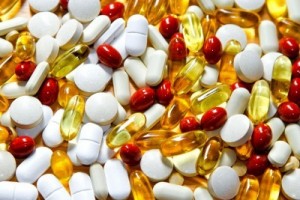Capsulation
TECHNOLOGY CAPSULATION
Innovation technology and author’s equipment
A technology and author’s equipment for capsulation of hydrophilic systems (e.g. emulsions, dispersions, suspensions and colloidal solutions) has been developed, allowing capsules possessing innovative properties to be produced. The novelty of this designed product consists in that it is currently the first precedent of capsulation of substances containing a water component. In the worldwide practice, technologies of encapsulation of fatty (waterproof) systems into gelatinous membranes are employed. To date, nobody has learned to capsulate ‘water’, with long-shelf-life thermostable capsules being produced.
The capsules may be characterized by spherical (or near to spherical), 1.5 to 10.0 mm in diameter, coated (in case consumer properties require to be enhanced) by external coatings of various colors and origins. As to its structure, this invention is characterized by the presence of inner contents and a gel-type given-thickness membrane containing calcium alginate. The inner capsule contents represent a hydrophilic substance or emulsion and/or suspension of dispersion.
Many substances with various physical-and-chemical properties can be capsulated. Capsular products can be used in pharmaceutical, food-processing, chemical, photographical, textile and oil-refining industries, as well as medicine, agriculture, and biotechnologies.
Capsule filler may be in the form of colloidal, emulsion, suspended or gel-type system.
Capsule membranes can stand up to the following effects: technological processing; mechanical effects (strong stirring); heat treatment (pasteurization or sterilization during 210 to 260 min at 130°С under condition of compensating pressure); mixing with other food components; and long storage (capsules’ storage life depends on inner fillers’ properties only).
Controlled release of encapsulated substances into a medium has been reached due to diffusion through capsule membrane with a preset rate (for instance, diffusion of a biologically active or pharmaceutical substance in a required body area).
Capsulation map:
1. The following can be capsulated:
– emulsions;
– dispersions;
– suspensions;
– colloidal solutions.
2. Capsules:
– have the spherical geometrical shape;
– are 1.5 to 10.0 mm in diameter;
– can be coated with various glazes and membranes (chocolate, caramel, etc.)
– can stand up to severe mechanical effects;
– can stand up to thermal effects (pasteurization);
– can interact with neither encapsulated substance, nor food substance, into which they are introduced;
– ensure complete safety of encapsulated substance;
– are characterized by long shelf life.
3. Capsule types:
– single-layered capsules;
– multilayer capsules (each membrane has its own properties);
– ‘capsule-in-gel’ model.
4. Scope of use:
– food-processing industry;
– pharmaceutical industry;
– chemical industry;
– textile industry;
– medicine;
– animal husbandry;
– agriculture;
– biotechnologies;
– microbiology.


